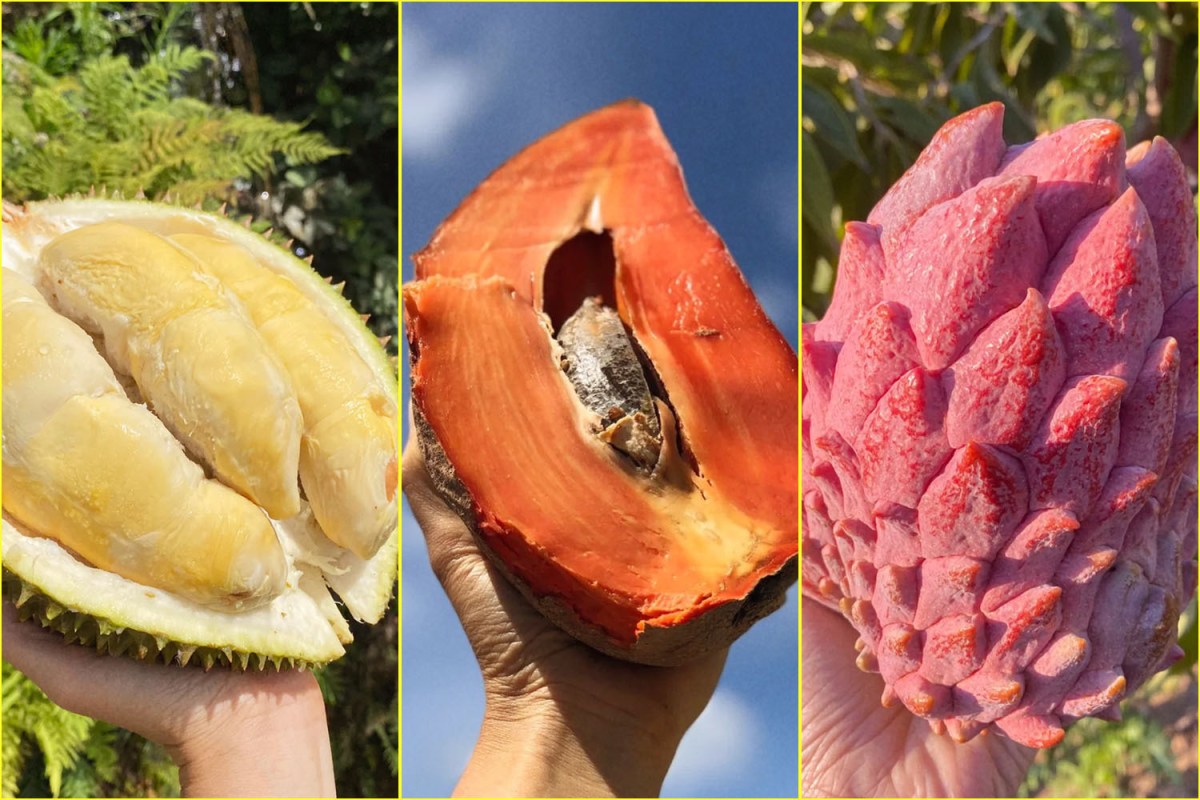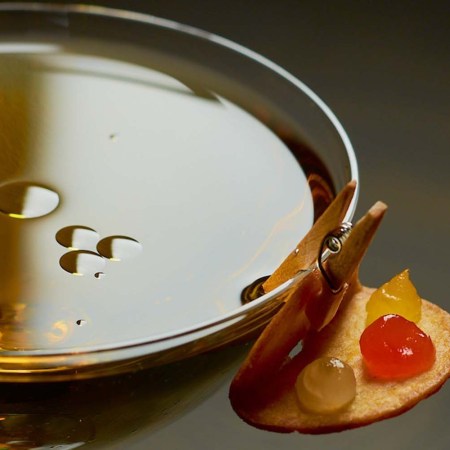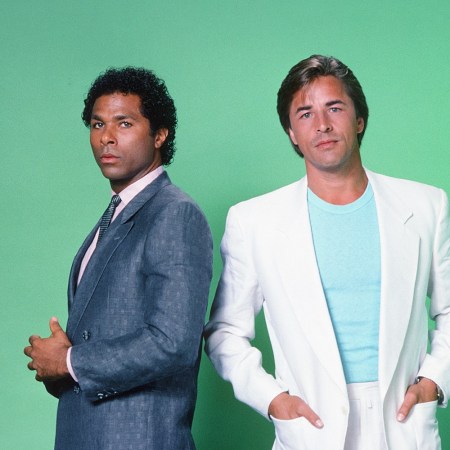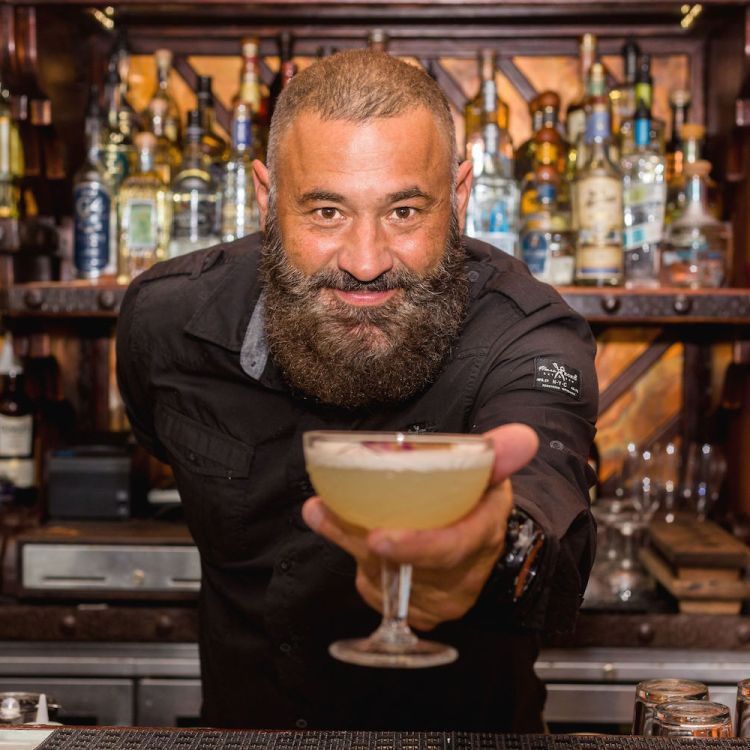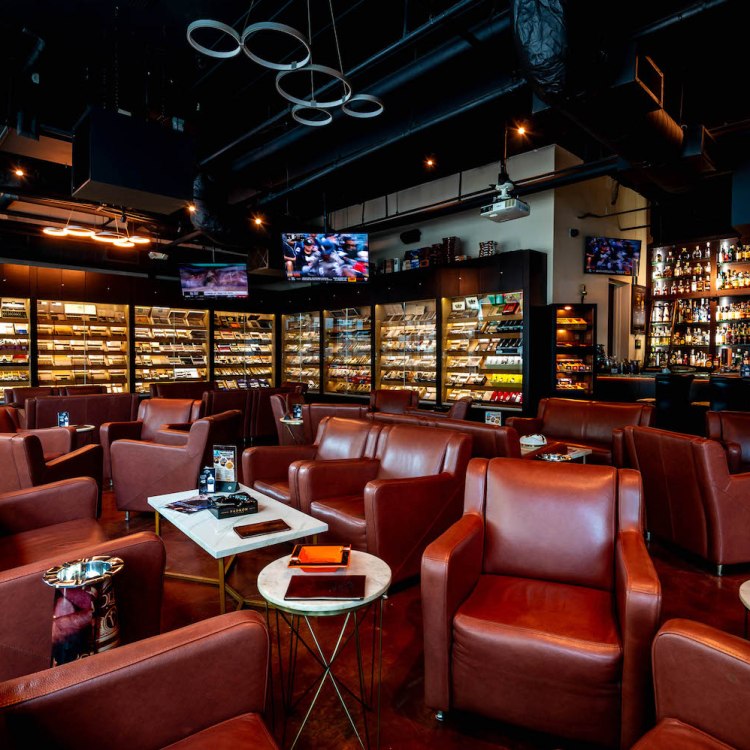Head over to MiamiFruit for some of the most expensive fruits you’ve ever laid your eyes on. $277, for example, will snag you an eight-pound box of red atemoya, known for its smooth flesh and bouncy, chewy texture. For $157, you can grab a six-pound box of super-sweet, custardy cardaba bananas. A one-pound box of charichuelo, which the site describes as “lemon nerf balls,” runs $177. Or for a whopping $555, grab 16 packs of frozen langsat, a lychee-like fruit rarely found in the U.S.
Peddling these delicacies is Rane Roatta’s passion and vocation. But the former professional saxophonist was not always so besotted with tropical fruit. Indeed, it wasn’t until a decade ago that he set down his sax and picked up a pitaya.
“I got kind of burned out,” he says of the music circuit. “So I started working at a small farm in Miami, just to learn, to make some money, pay rent.”
But what started as a small side gig soon became bigger. The farm, he recalls, began sending him out on his bicycle, to sell the fruit at weekend farmer’s markets. And when the farm’s grant money ran out, leaving him jobless, it was this experience that would be his saving grace.
“I had made so many connections with local growers in the area,” Roatta says, noting that many had just a handful of each variety of tree on their land, making the fruit a tough sell on a commercial scale.
“The quantities are so limited and the perishability is too high, and they look weird,” he says. “It was convenient for them to ask me to buy it and go sell it at the market and help them basically move the fruit that was not really getting used.”
But what today seems like a no-brainer — fresh, local, organic fruit — was “a very niche market” in Miami a decade ago.
“People didn’t get it,” he recalls. “Like, ‘If I can get bananas at the grocery store for 50 cents, why am I buying a banana for two dollars?’”
Social media proved to be his biggest asset. Soon, people were discovering his business online and asking him to ship the fruit all across the country.
“It got to the point where I was spending all of my time responding to messages on social media to try to fill the orders,” he recalls, so his business partner, Edelle Schlegel built a website, and the rest, he says, is history.
“I saved up and bought a little car, and then saved up and bought a truck, and then saved up and bought a farm,” he says. “But it really started out as me on a bicycle living in a trailer in my mom’s backyard.”
Today, the pair have a bustling business selling mostly local fruit, with a few exceptions — like durian, which they import frozen. Their 7½-acre farm has become the ideal place to experiment with new varieties they can then share with local grower partners: high-value crops that don’t just allow farmers to keep their land out of the hands of developers but also help Roatta continue to provide South Floridians — and Americans nationwide — with spectacular fruit they won’t see at their grocery store.
Rare, fresh, local — these are all words that describe Roatta’s offerings. He agreed to take InsideHook’s readers along for a crash course on some of his most exciting options.
InsideHook: A lot of people are really afraid to try durian, given its stinky reputation. How would you revamp its PR?
Rane Roatta: My pleasure! So a typical American’s experience with durian is usually a monthong variety from Thailand. And not to pooh-pooh monthong, but it’s harvested unripe, and so to really know if you like durian, you have to try a ripe durian. An unripe durian to a ripe durian is like comparing a cucumber to a watermelon. Our durian that we sell is almost entirely tree-ripened Malaysian durian. It’s just a totally different experience.
Is the longneck avocado natural or engineered somehow?
Everything on our website is natural; nothing is engineered. There’s dozens — maybe even hundreds — of longneck avocado varieties in the world. We have a handful here, and we’re growing even more of our favorite selected varieties. But yeah, if you travel the world, you’ll find those popular in a lot of places, a lot of tropical regions.
Do they stand out in terms of flavor, or is it just…
It’s just about the big phallic avocado. I mean, it’s a great avocado! But it’s eye candy.
What about the black avocado? What makes that stand out from your run-of-the-mill avocado?
Some of these black avocadoes, you can eat the skin, and it’s really fun to bite into it. It’s like a party trick. And the flavor’s always a little different in these different varieties, but more or less… it’s an avocado.
Which of your fruits looks the most alien for how delicious it is?
Mamey sapote or sapodilla are kind of boring outside; they kind of look like a potato or a coconut or something. But inside, they’re super sweet and just unreal flavor… like a mamey tastes like sweet potato pie, but a sapodilla tastes like brown sugar, basically. Like brown sugar crystals inside.
Whoa, that sounds amazing! How would you use something like that?
Mamey sapote is really popular in Central and South America, and even the Caribbean. It’s usually used either as-is, eaten fresh and ripe, or made into shakes and smoothies, but it’s an amazing fruit. And it’s only grown here in South Florida to my knowledge. For U.S. consumption.
Are there any things you sell that you’re the only U.S. producers of?
I’m sure there’s a lot of people that grow kind of backyard style, but I think as far as retail, and like wider availability, like if you wanted to buy it and you’re in New York, I’d say, a lot of stuff. The abiu, the longneck avocado, the tropical persimmons…I mean, there’s got to be a ton of those very limited and very rare fruits on there that we’re growing that I don’t think anyone else is doing on a semi-commercial scale.
You’ve also got loads of pretty rare banana varieties!
The Gros Michel bananas and the Blue Java bananas are very popular. Variegated bananas are extremely rare; that’s a beautiful, unreal looking banana, and it’s very popular, I think, in Thailand. But it’s so hard to grow, and it’s so beautiful.
Is Gros Michel the one they used to use as the blueprint for banana candy?
Yes! So, this is the story that I’ve been told and read, which is that the artificial banana flavor that’s used in candies was modeled after the flavor of the original Chiquita banana, which is the Gros Michel banana. That banana pretty much disappeared by the mid-’50s, so anyone that was eating bananas before the ’50s, and they tried this banana, there was gonna be a cool feedback on that.
So does it taste like banana Runts?
Yeah, it has that flavor. It doesn’t taste like refined sugar; it tastes like a banana. But it does have that flavor. I make smoothies almost every day, and I only use Gros Michel in my smoothies now, because it’s like…I’ll put Gros Michel, strawberries and water in a blender, and it tastes like one of those fast-food, McDonald’s strawberry-banana milkshakes.
One of the things that stood out to me on your site was cakefruit — could you tell me more about that?
Oh, you mean the eggfruit? I mean it kind of looks like egg yolk, like hard-boiled egg yolk, and it’s, like, a cakey consistency. Cakefruit’s not a bad name for it, actually. That’s a better name for it than eggfruit. But it’s really cool, because it’s super dense. It’s similar to mamey in that it’s like a meal. It’s got calories; it’s dense. I’m not that great in the kitchen, but I’ve seen people use it to make cakes and pies and milkshakes and all kinds of stuff.
What’s the most beautiful fruit you grow?
I’m a big fan of the anones, or our Lisa atemoyas that we grow are just unbelievably beautiful on the outside and they’re also amazing on the inside — one of my favorite fruits. Rollinia is another one we grow at our farm that’s really beautiful. It looks like a dragon egg. And custard apple — there’s a red one and a green one. The red custard apple is unreal. Tastes like raspberry yogurt.
I’m sure this is like asking you to pick a favorite child, but what’s your favorite fruit you grow?
Yeah. I can’t really pick a favorite. But I do think that those last three I mentioned — the Annonaceae family — are probably my favorite family of fruit. So that would be also soursop and cherimoya and atemoya and sugar apple, and those are all in the same family.
If you had to convince somebody why they should be buying a small box of bananas for $77… why is it worth it?
I think with e-commerce in general, sending food online is pretty costly, and so that contributes to the cost, whether you’re buying ice cream from your favorite ice cream vendor online or fruits. Fruit is so cheap at the grocery store, but it’s imported with borderline slave labor prices a lot of the time. It’s really easy to forget what goes into growing this stuff locally and paying fair wages and buying land at USA prices. But on top of that, it’s such a novelty and it’s such a great experience that with a variety, you can have a meal or a couple of meals. You can use that fruit for weeks: Use a tree tomato in your salad. Use a local avocado in another type of meal. You can use bananas in your smoothies and mamey as dessert, or make a pie out of it. People spend over $100 to go out to a fancy dinner, which lasts a couple of hours, or you can get a box of 20 different kinds of tropical fruits that will last you weeks. So I think if we could do it cheaper we would, but we’re borderline as cheap as we can be to deliver a good product like this.
This article appeared in an InsideHook newsletter. Sign up for free to get more on travel, wellness, style, drinking, and culture.
